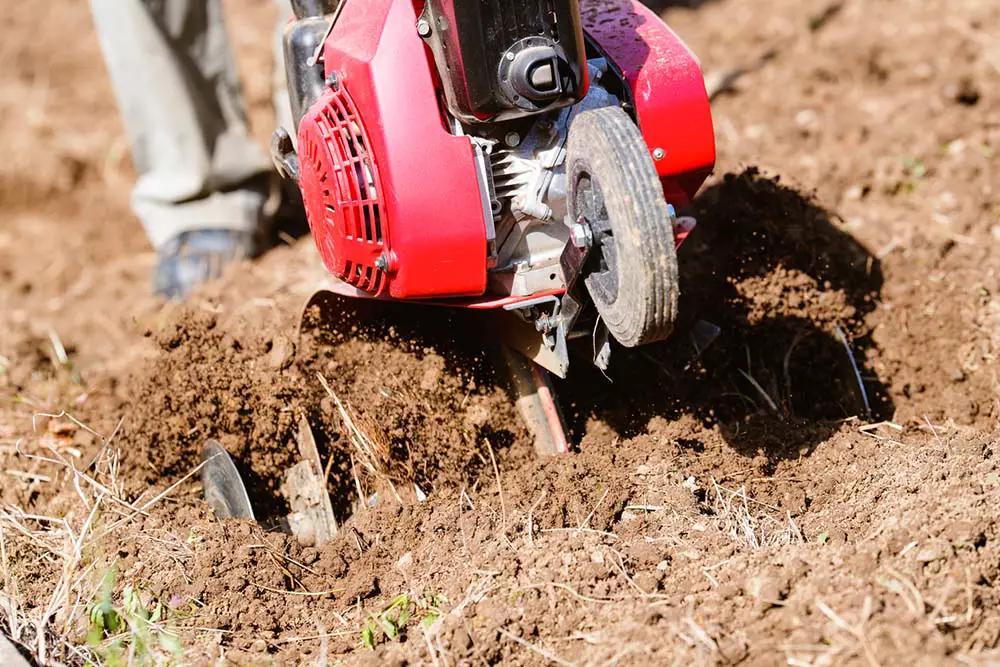Last Updated on April 5, 2024 by Real Men Sow
There are many specialized tools that you can use to make your garden look professional while being efficient and cost-effective when you use horticultural equipment. This post will guide you through the best ways to rotavate the garden like a pro.
What Is A Rotavator?
Rotavators are powerful gardening tools designed to remove and aerate the soil. Rotavators are equipped with a series of rotating blades that break up the soil as they rotate. This improves drainage and helps level out the ground, making it ideal for growing vegetables and other crops.
Why rotavate your garden?
You will need to aerate your lawn with petrol lawn aerators. Aerating a lawn allows air, water, and nutrients to reach its roots, alleviates soil compaction, and removes unwanted thatch, foreign material, and reduces soil compaction.
Rotavate Garden With Special Equipments
There are three pieces of equipment that you can hire for your work. These include the Light Duty Petrol Cultivator/ Tiller, Medium Duty Petrol Rotavator, and the Heavy Duty Petrol Rotavator. However, we recommend the Heavy Duty Petrol Rotavator only for extremely difficult and labor-intensive projects. You should also consider your garden size and soil type to choose the best rotavator machine.
Best Equipment To Rotavate Garden
It all depends on the size of the job. The light-duty tiller/cultivator is great for small gardens and allotments, while the medium-duty petrol mower is better suited to larger areas of land, vegetable patches, and small fields.
Another aspect to consider is how far you wish to disturb the ground. The light-duty tiller/cultivator only turns the topsoil, with a depth of 200mm. The medium-duty petrol rotavator can go deeper, with a depth of 230mm.
How To Use A Rotavator On Gardens
Ground Preparation
It is essential to check the soil moisture before you use the tiller, cultivator or rotavator. This is especially important if the soil has not been tilled in a while. The machine might not be able to work if the soil is too dense with clay. Instead, scrape the soil’s top inches.
If the soil is too wet, clods will form during tilling. They harden off as the soil dries, ruining it until the next winter.
Water The Soil Before Rotavating
It is important to water your soil if it has not been tilled before you try to cultivate or rotavate it. To soften the soil, water it three to four days before cultivating it. This should be done for several hours.
To check if it worked, dig a 6-inch hole in the ground and remove the soil base. It should crumble easily if you rub it between your thumbs and index fingers. If the soil dents more than it crumbles, you need to wait a bit longer.
Weed Reduction
It is essential to get rid of any weeds before you use a cultivator, tiller, or rotavator in your soil. You run the risk that weeds will spread throughout your garden and cause more work so make sure you know how to identify common weeds.
If it is dry and warm, you can trim the weeds with lawn mowers three to four days before you plan on rotavating the soil.
To allow them to soften and dry, weeds should be cut at least two weeks before it rains or is cloudy.
Operating The Rotavator Machine
Once you begin to machine, slowly move forward to create long channels for vegetables and plants. You should work in a lengthwise fashion across your soil. Repeat the process until you feel satisfied with the result. This could be as few as one pass, or as many as three or four. Also read more on rotavating gardens step-by-step.
General Safety Tips When Rotavating the Garden
- When using the cultivator/tiller or rotavator, it is important that you keep your hands on the controls and your feet away from the machine’s rear.
- You should not apply too much vertical pressure to the machine as it may cause it to jump.
- Do not rotavate soil with angles greater than 20 degrees

